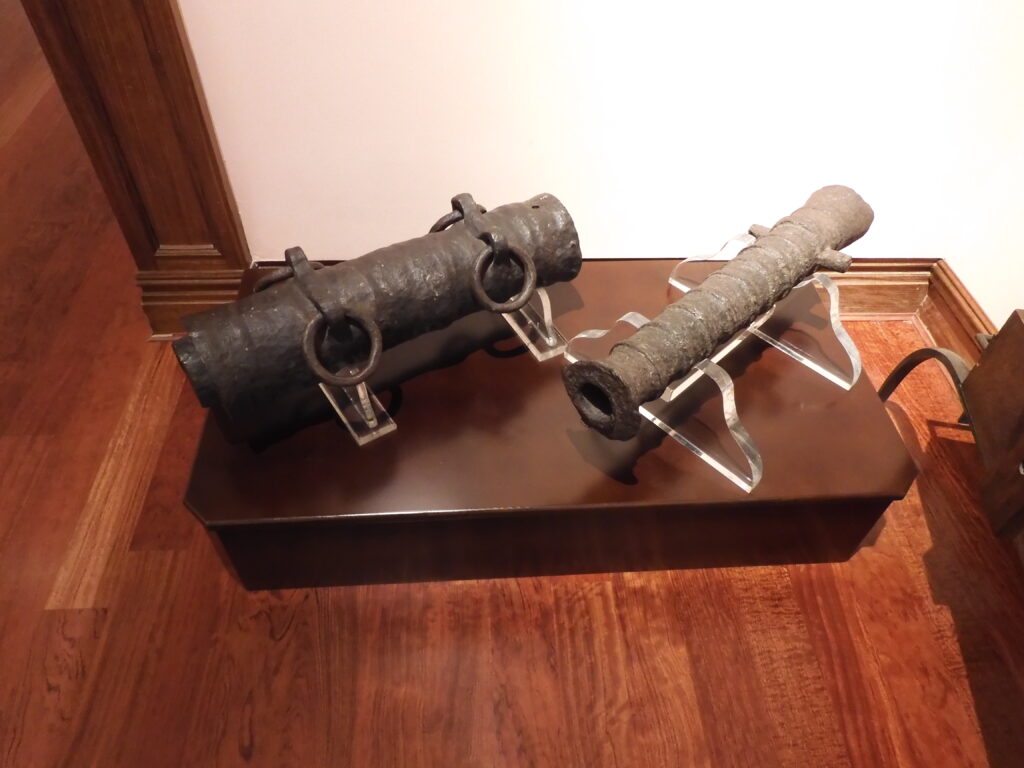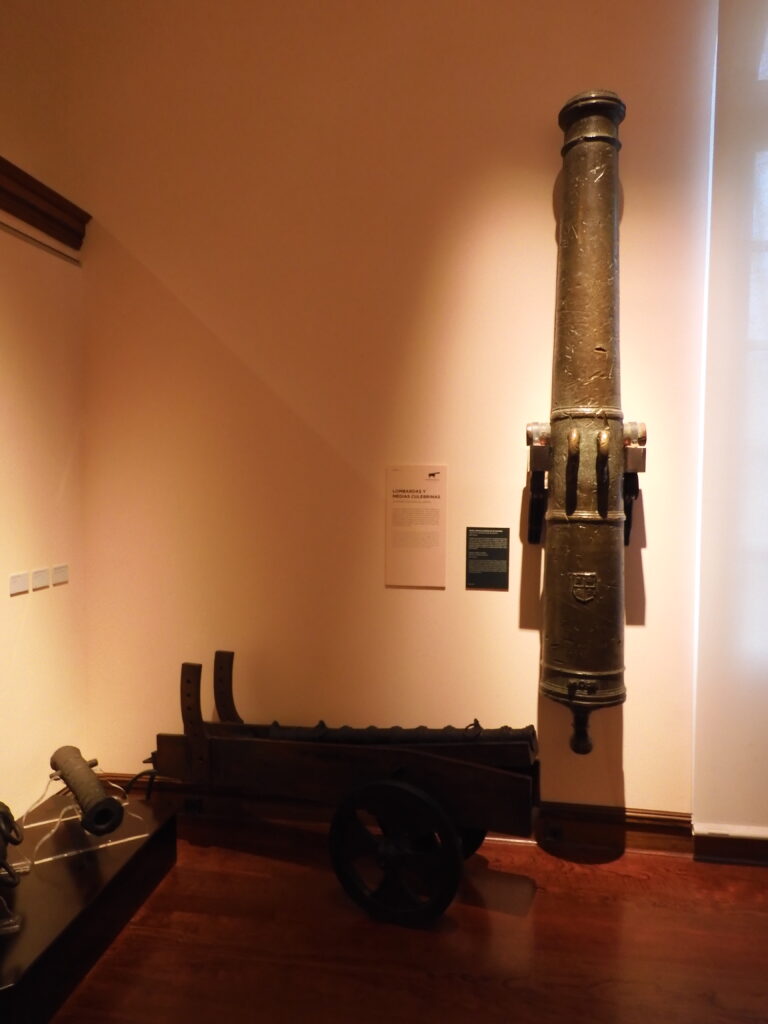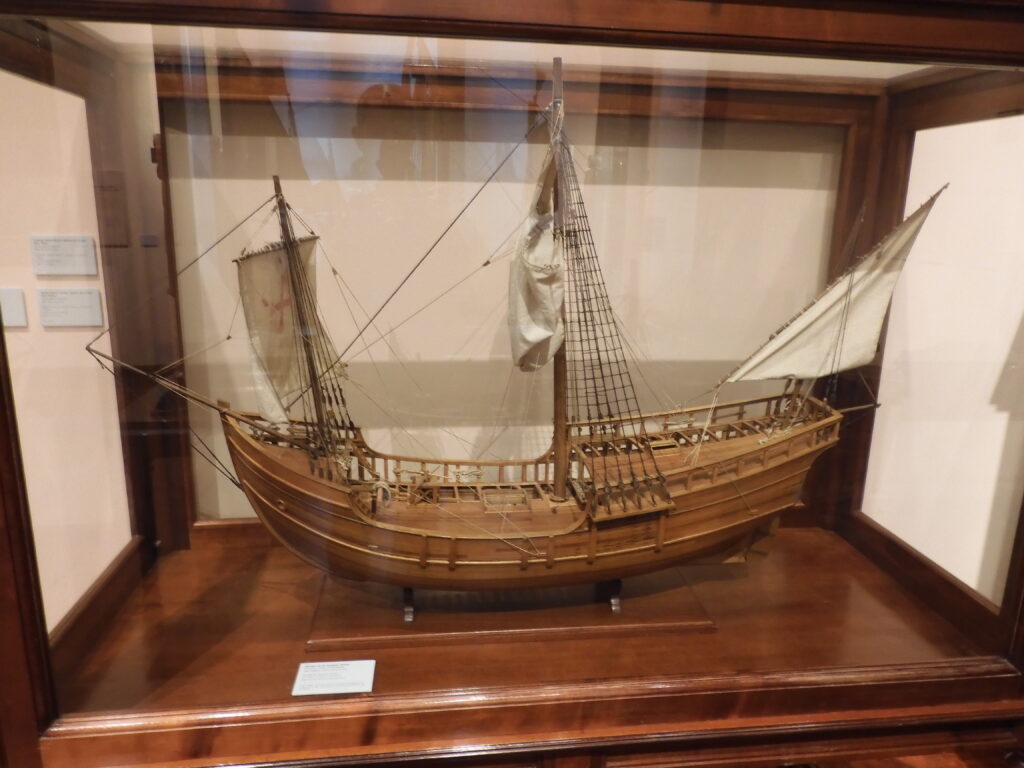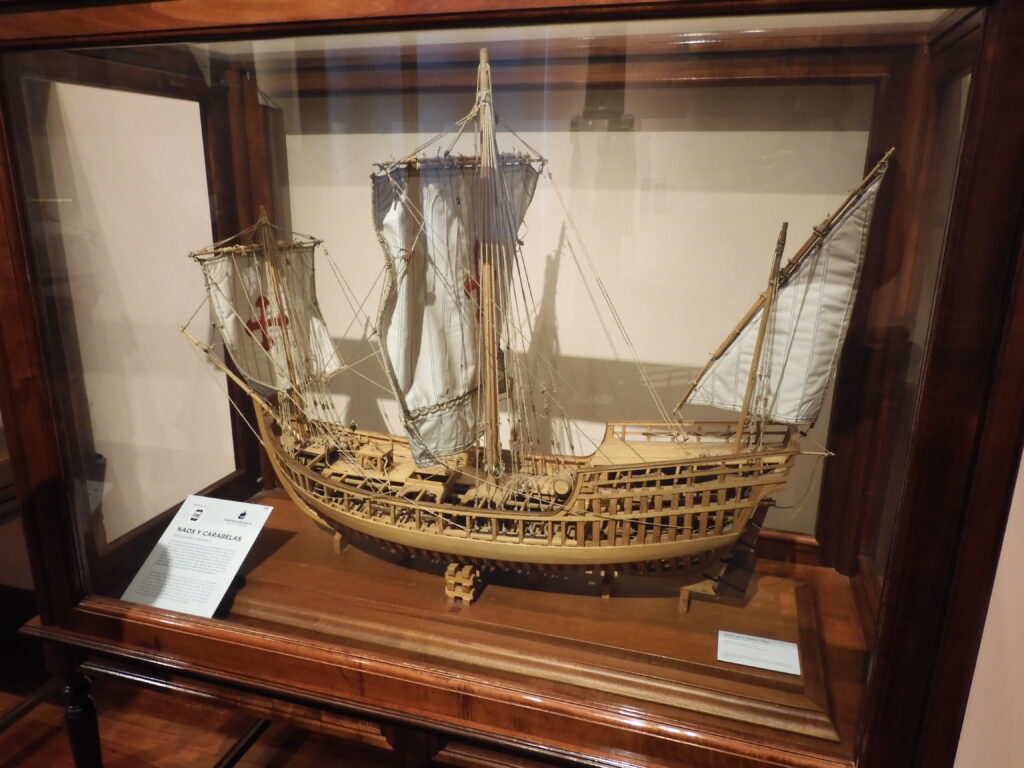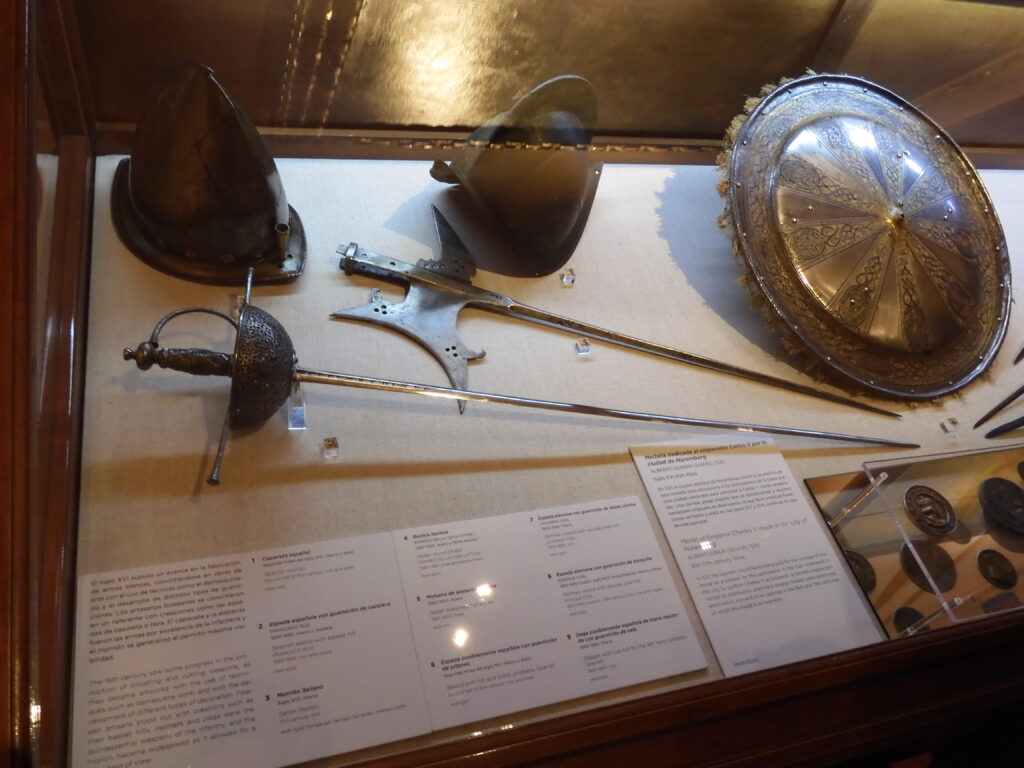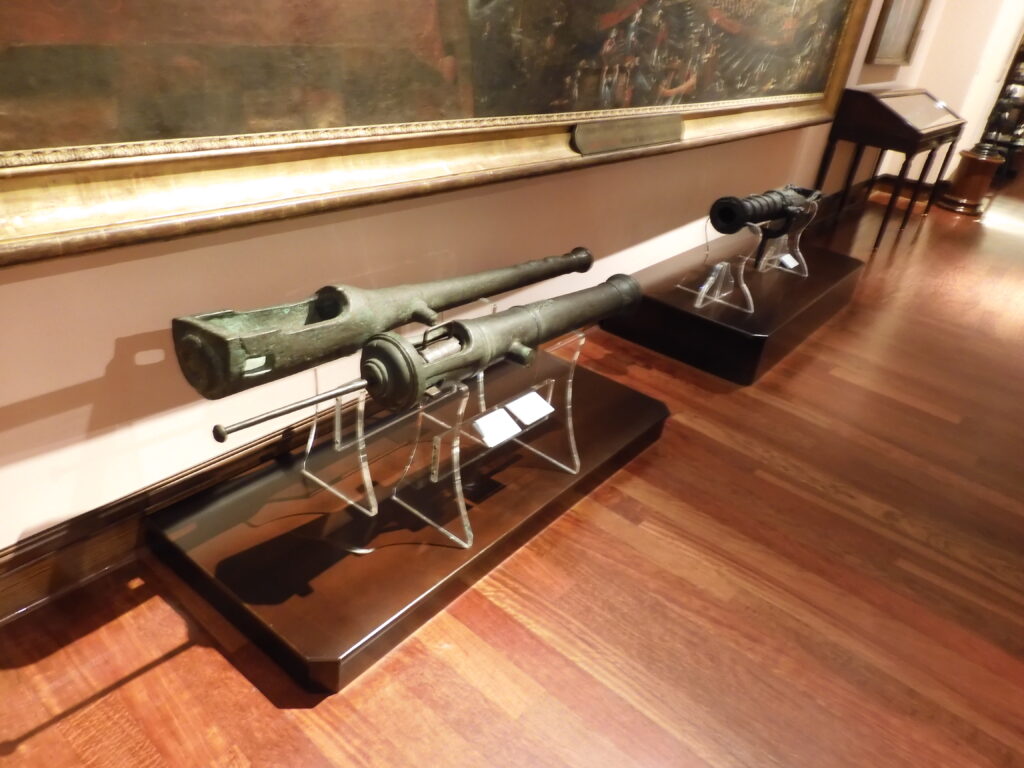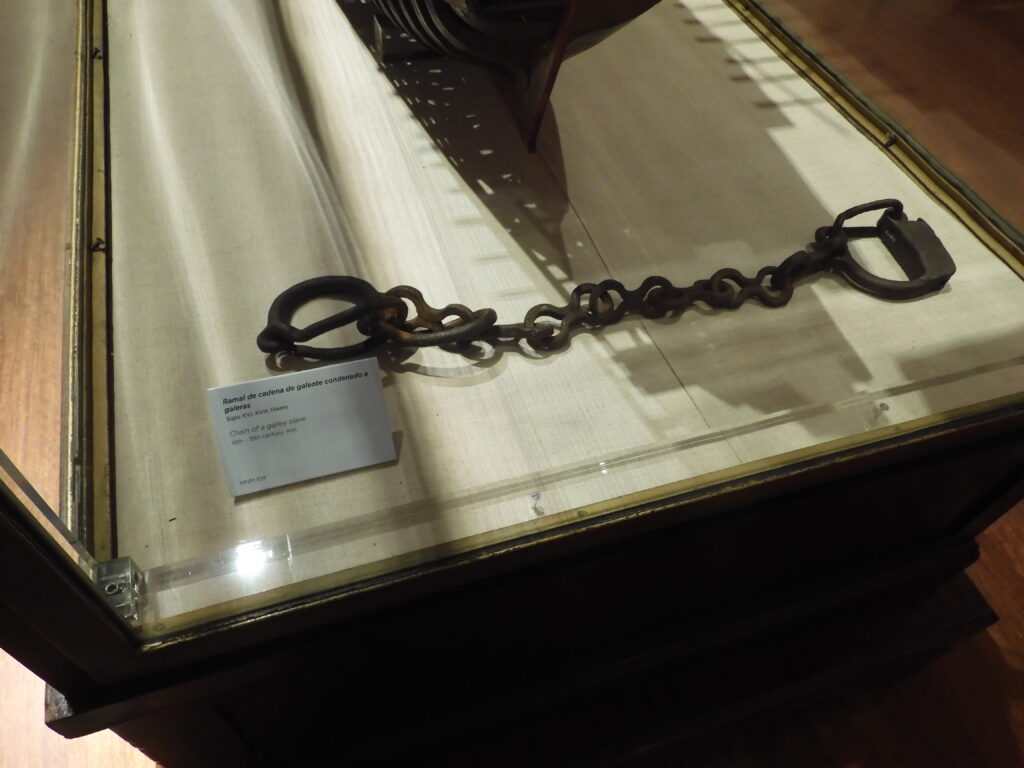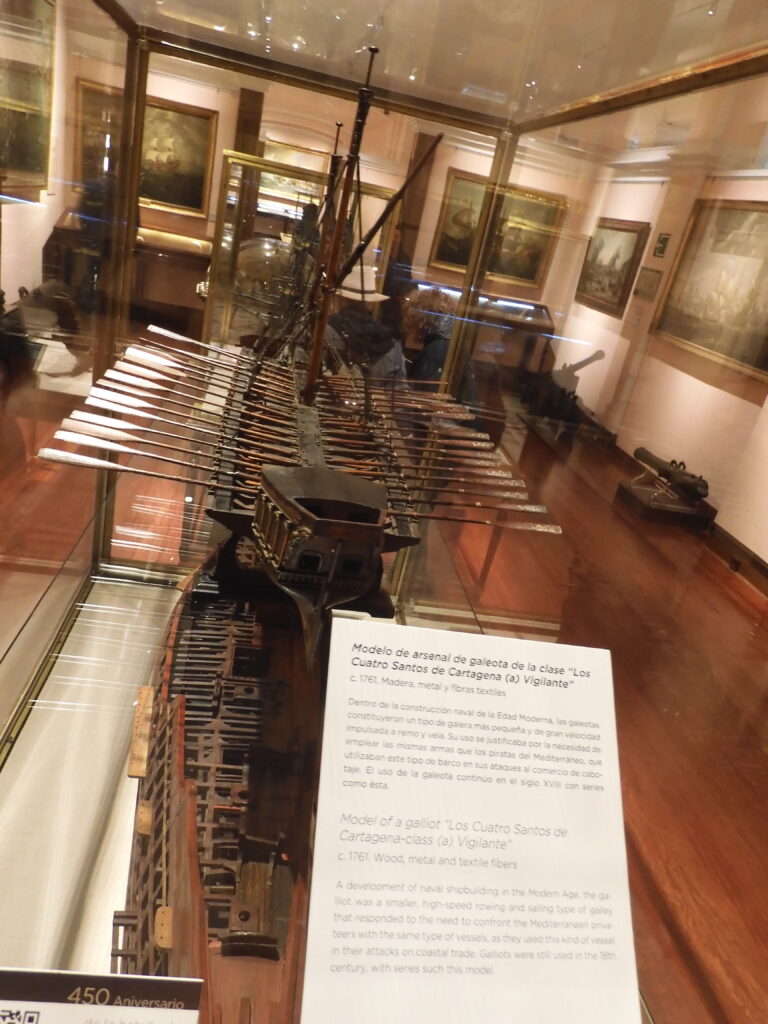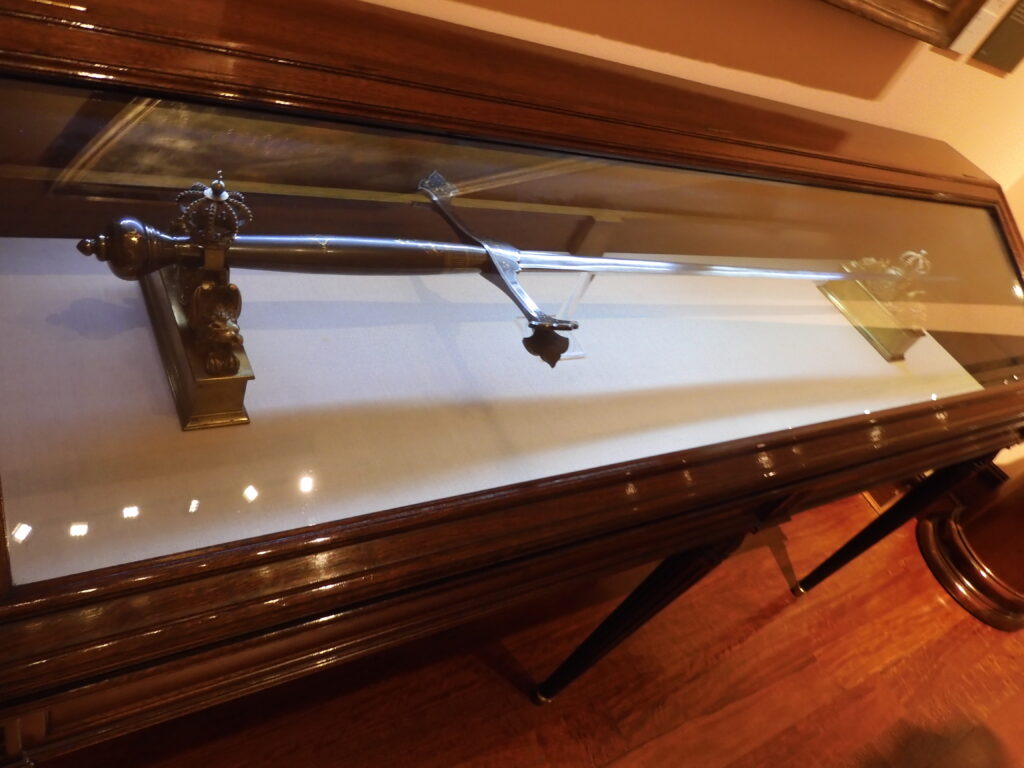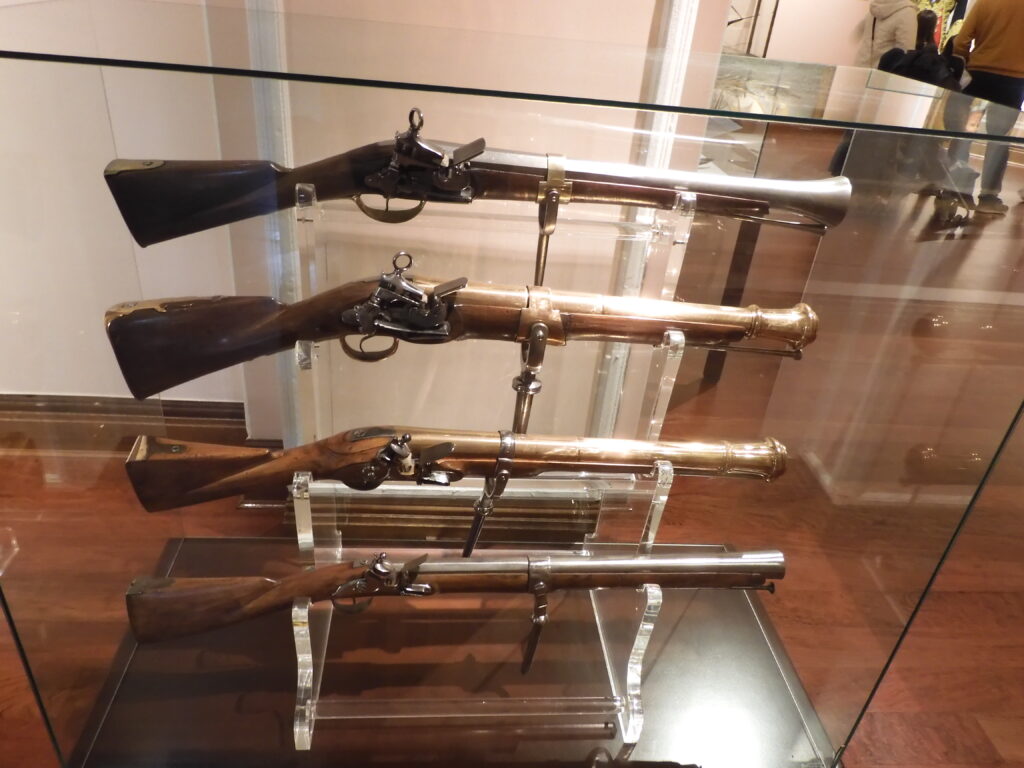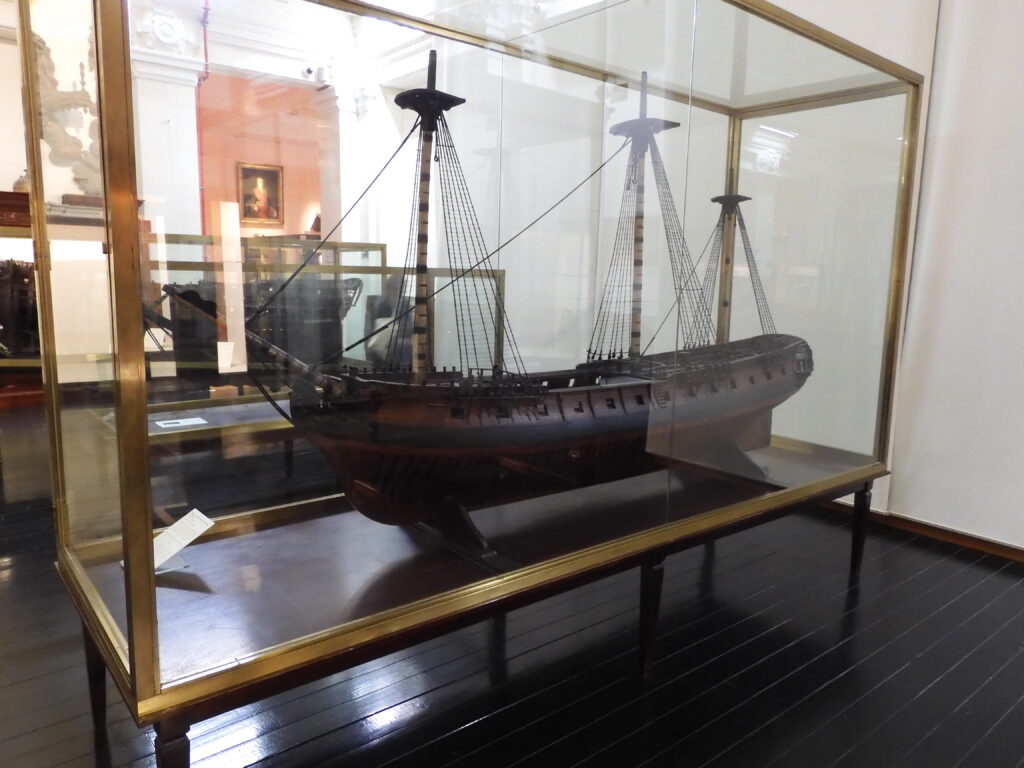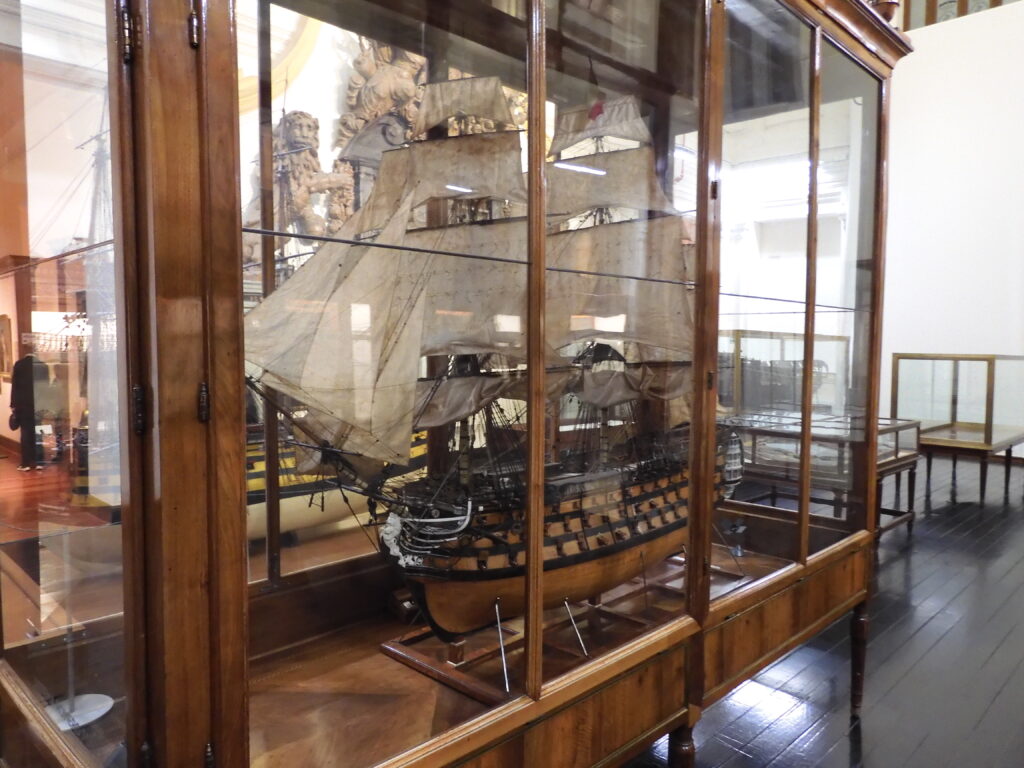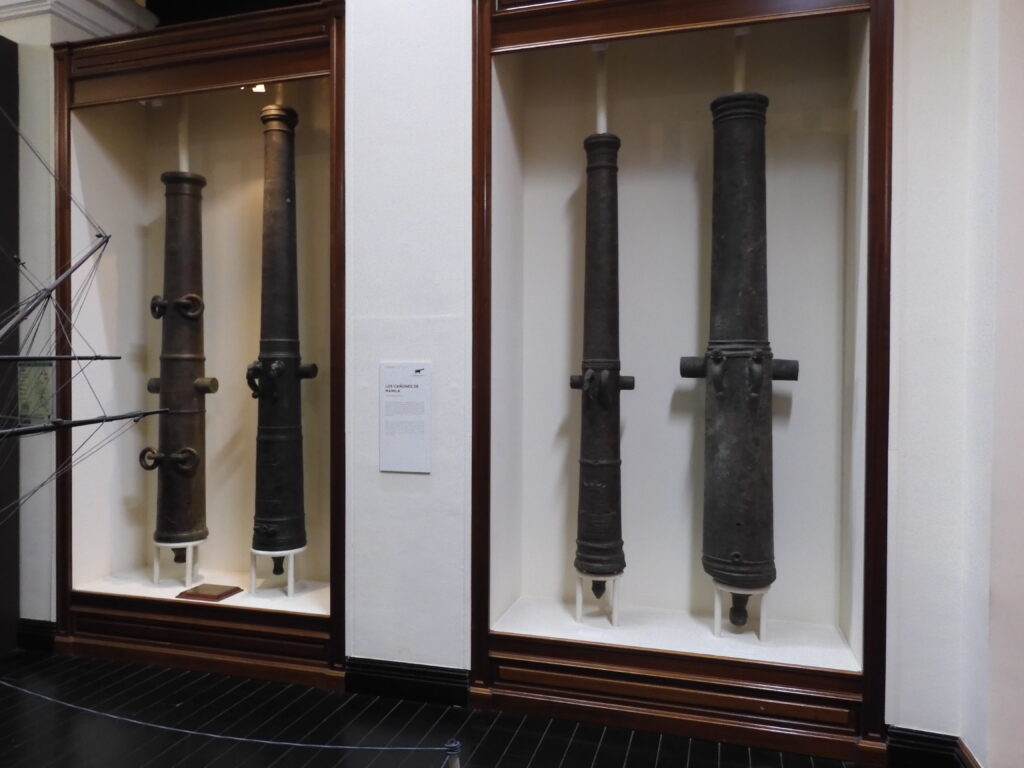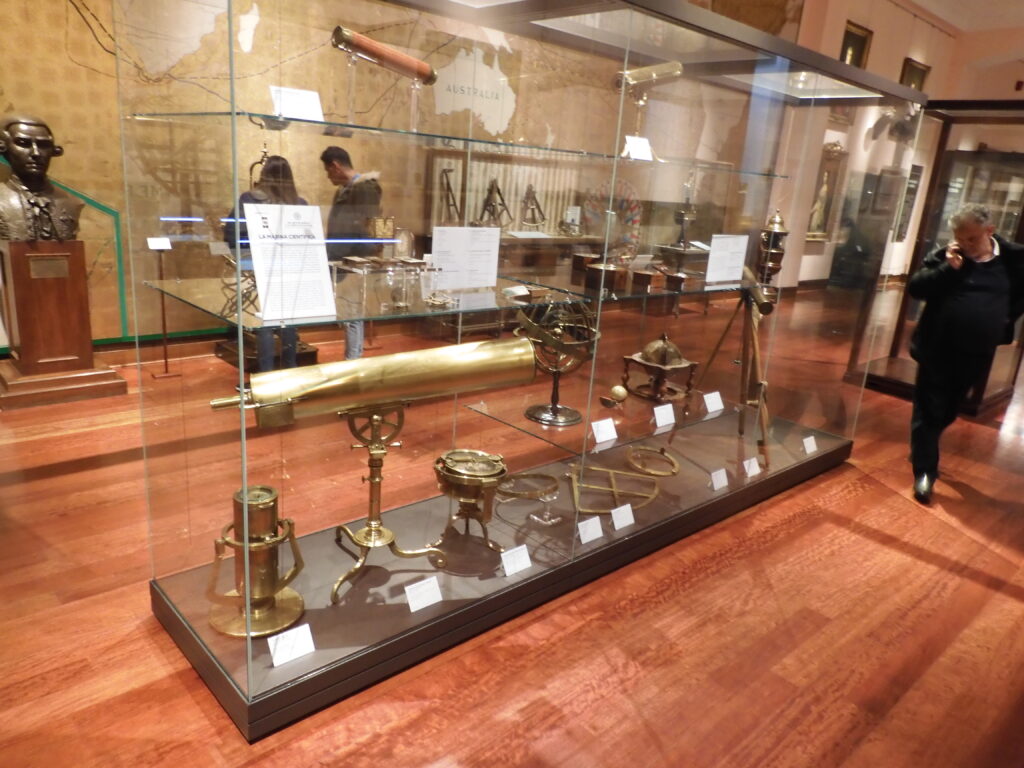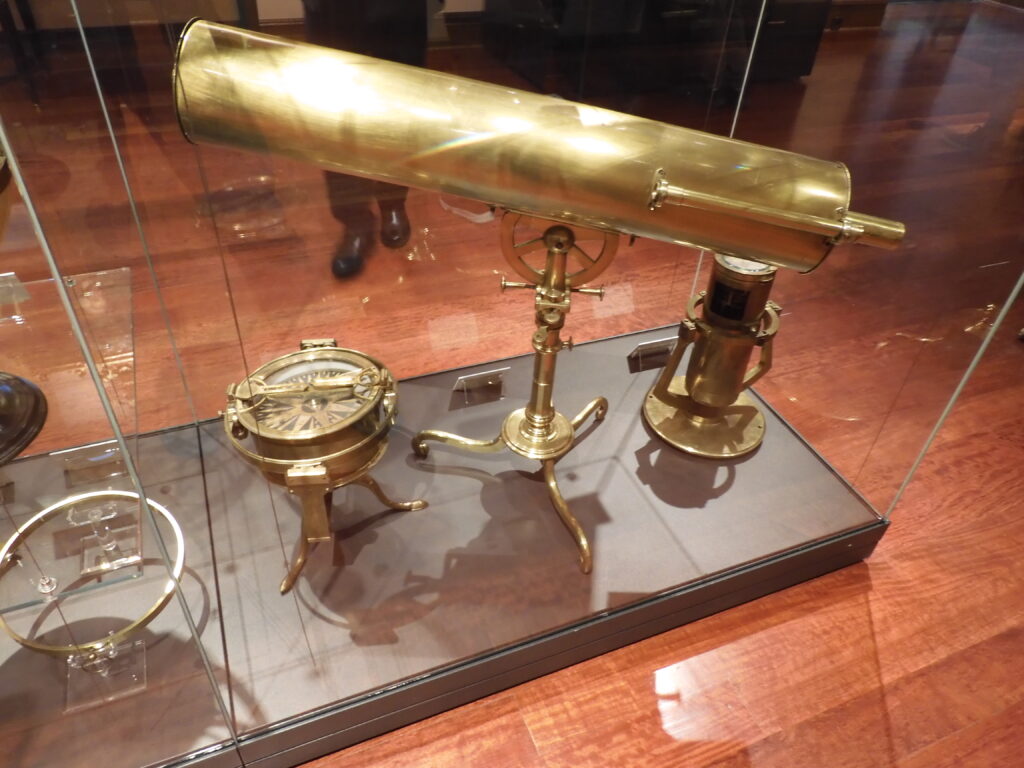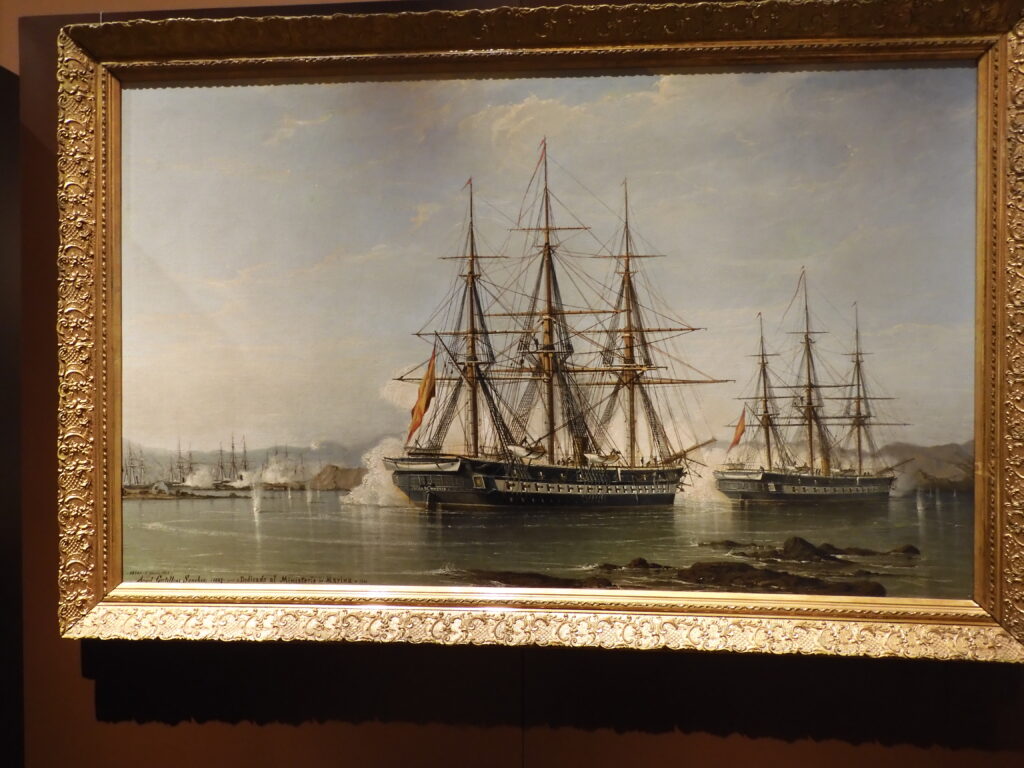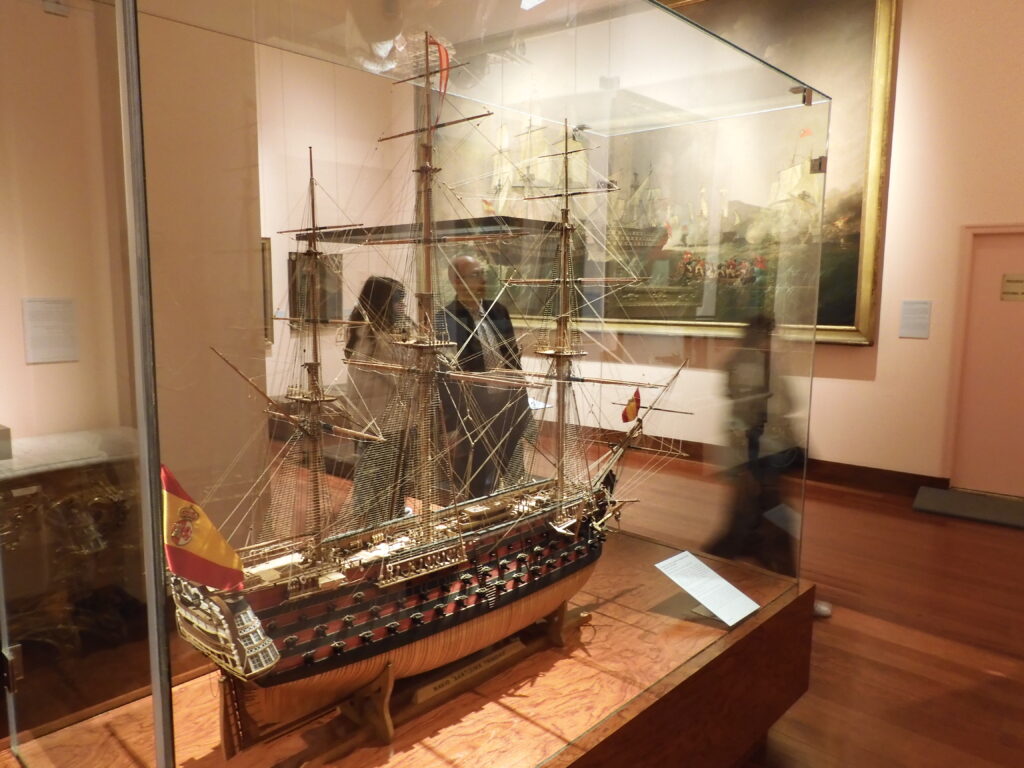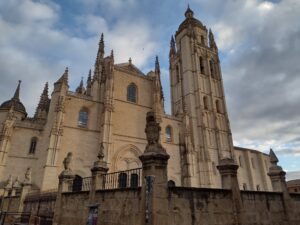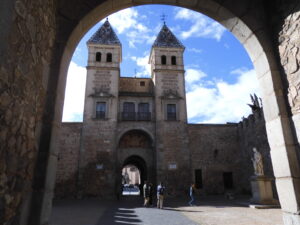El Escorial
Renaissance Habsburg Monastery
On my second day in Spain, I caught the high speed train to El Escorial, a monastery about half an hour from Madrid. Since nearly everything in Spain operates on a 10-6 schedule, I slept in a bit and caught the train just in time to enter at about 10:00. Normally, I would run in the morning, but it was just too cold. I did not exercise once the whole trip, unless you count walking 9-13 miles each day. I found an English speaking guide and headed on in.
King Phillip II ordered the construction of El Escorial in the 1560s not only as a monastery, but also as a royal residence. It has also served as a university and a library, among other things. It is the world’s largest Renaissance building. Most of the Habsburg and Bourbon kings of Spain are buried there, directly under the altar of the basilica. John of Austria is also buried here with a replica of his sword, the original of which is at the Museo Naval. I’ll talk more about John of Austria when describing the Naval Museum below. Phillip II sincerely wanted to be close enough to always be witness to the performance of the Catholic masses. His quarters were placed so that he could be near and hear the mass said even when he was sick and confined to his bed.
I preferred the Renaissance style of the El Escorial architecture and gardens to the Bourbon era Baroque styles more prevalent in downtown Madrid. The monasterial palace reflects the classical design Phillip II envisioned for the complex, as well as the austere nature of his view of Catholicism. A devoutly religious man, Phillip could also be rigidly pedantic. He stated once that he did not intend to be the ruler of a heretic kingdom, nor to rule over a kingdom of heretics. He disliked war, but if it was necessary – especially to preserve his dominions for Catholicism – he did not avoid it. The massive, severe, daunting gray walls seem to give off this same aura of piety, strength, and sternness. Spain was, after all, at the height of its power during Phillip II’s reign. El Escorial comes across as the monument of a powerful, wealthy, theocratic, exacting, inornate regime. There is some debate about whether El Escorial’s layout was based on a gridiron. The basilica itself is dedicated to San Lorenzo, who was supposedly martyred on a grill, leading to the claim that the design of the grounds was based on that legend. It seems in keeping the value Phillip II placed on piety and austerity that he would design the building intended to serve as his family’s legacy after the image of such a grim image of religious self sacrifice.
One of my favorite areas of El Escorial was the collection of ancient maps. Of course, the Habsburg kings of Spain were great patrons of exploration, and much of the world was not known in detail to Europe in the 1500s. Many of the expeditions sponsored by Phillip II and his family members resulted in the creation of maps – crude by today’s standards – of the far corners of the Earth, from the Spanish perspective. Several of these are on display in a prominent room at El Escorial. These maps, too, seem to reflect another important aspect of Phillip II’s personality. He was a diligent worker, but distrusted his advisors and subordinates. He thus sought to make most decisions on his own, from his monastic palace. He was notorious for postponing decisions and asking for more information. Certainly, these maps are valuable insights into what was known about the East in the West in the 16th century. A little part of me wonders if they aren’t also the product of Phillip II’s constantly pestering his subordinates for more information, reports, and things of that nature.
(Continued)
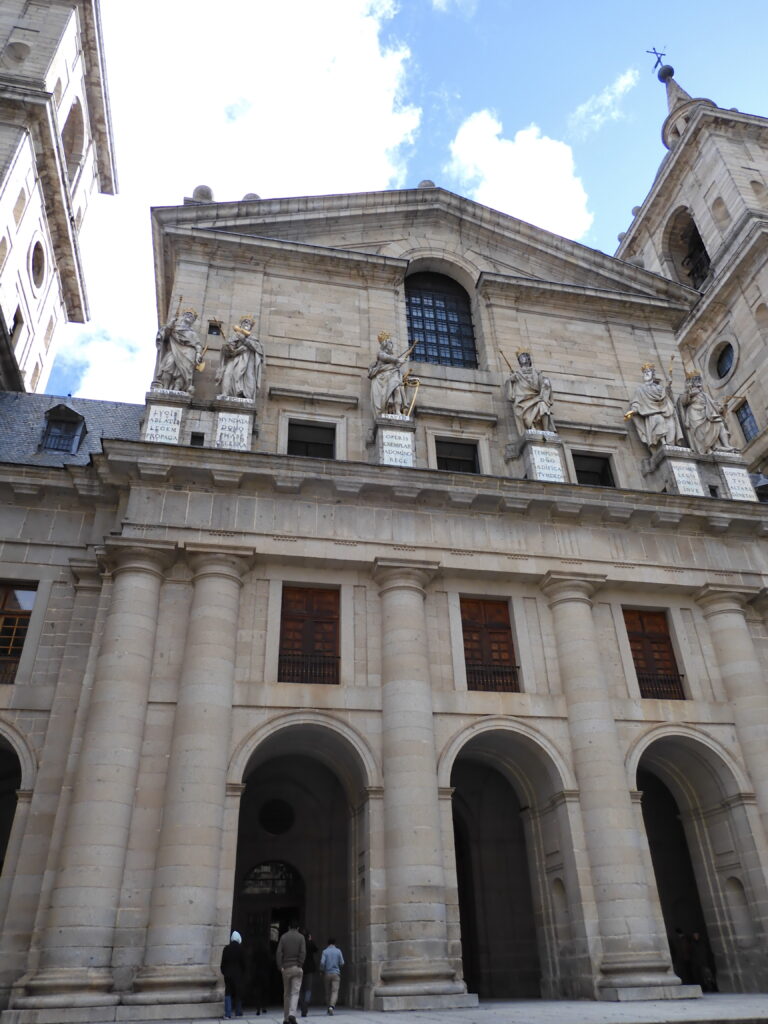
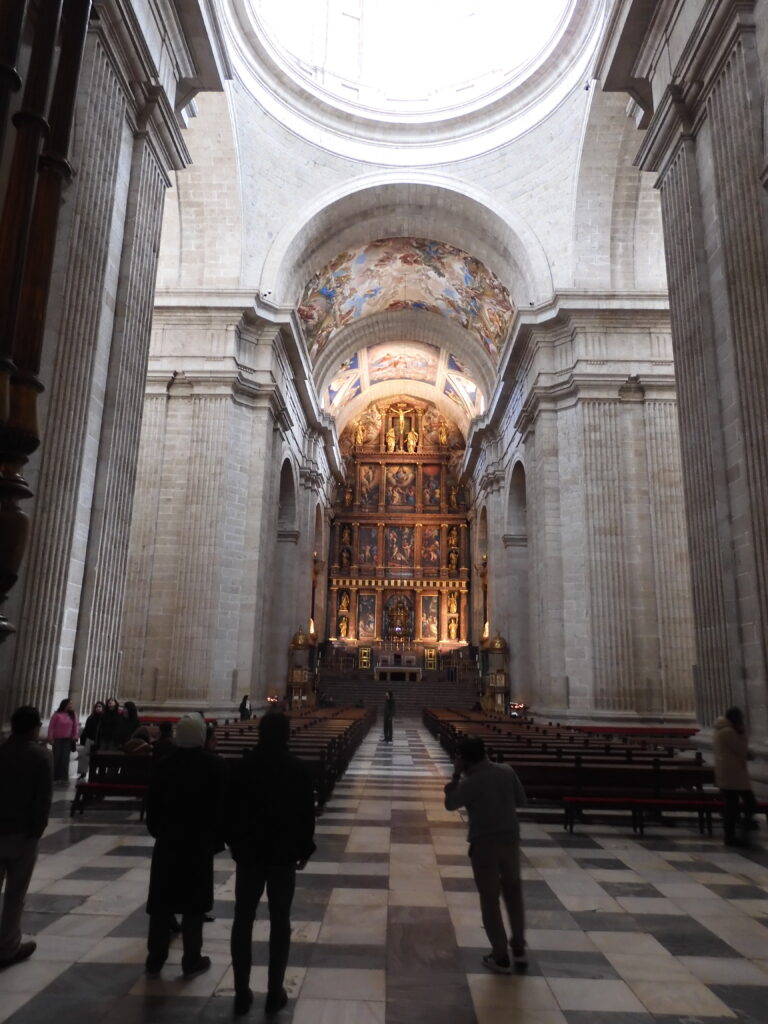
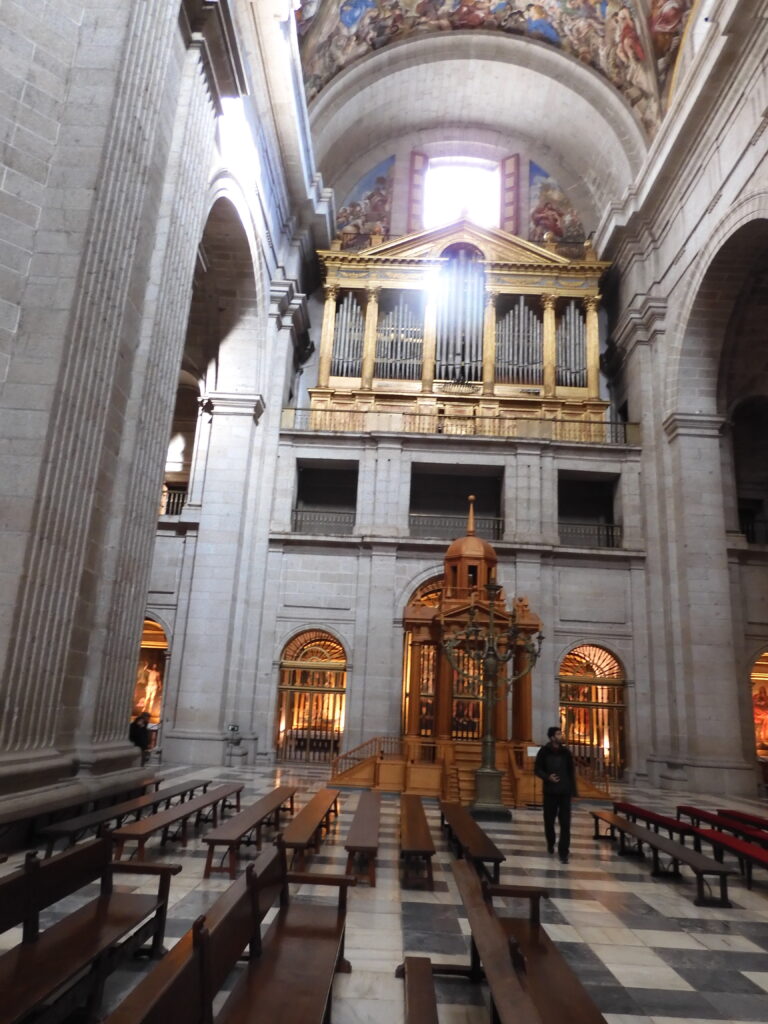
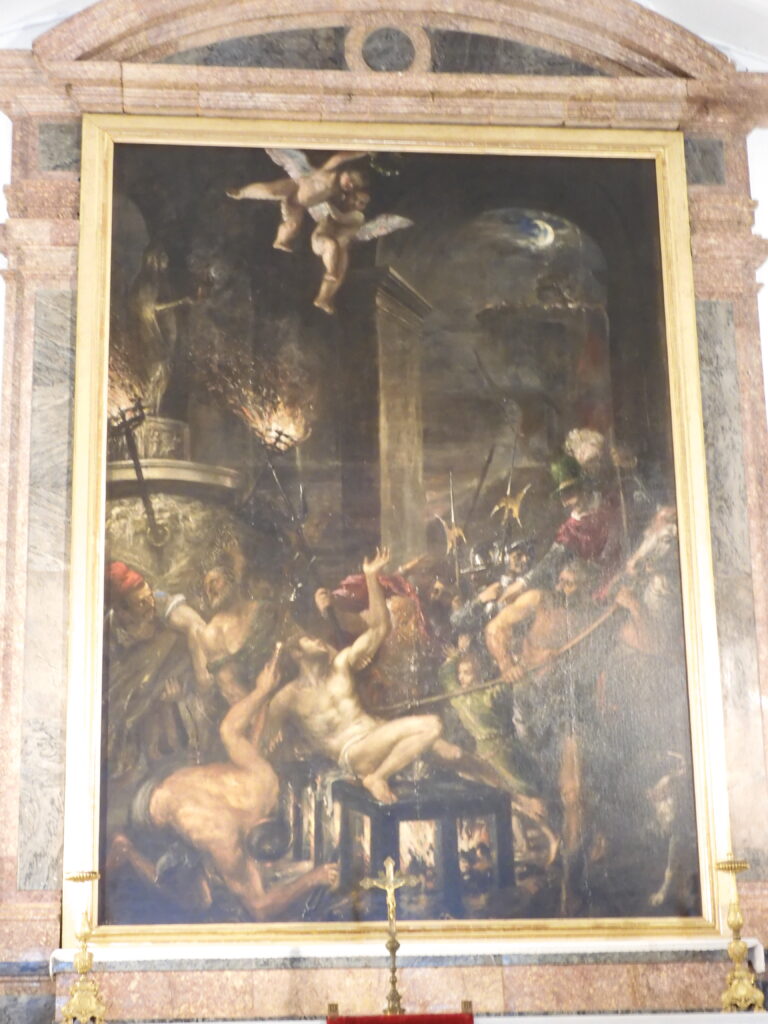



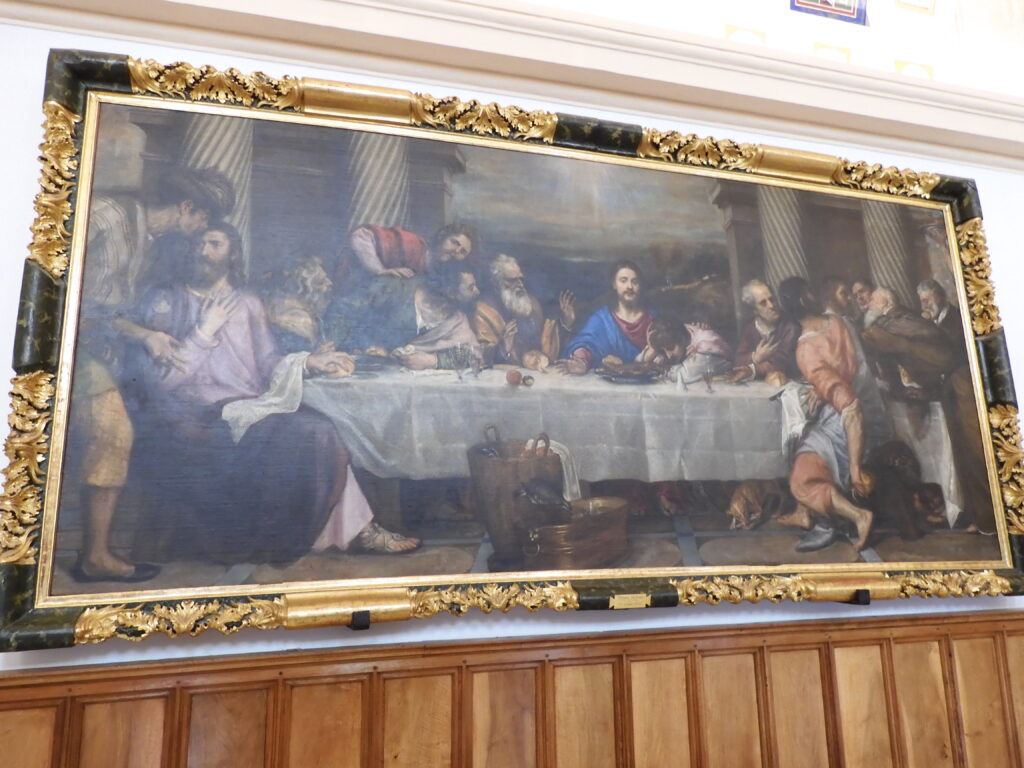
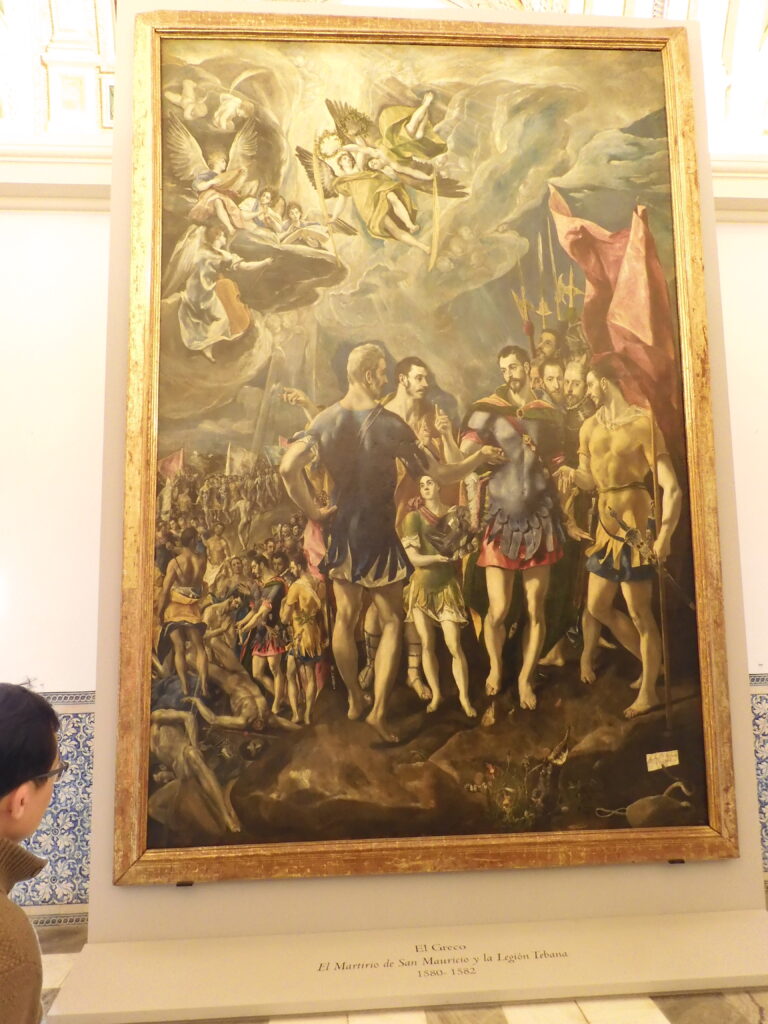

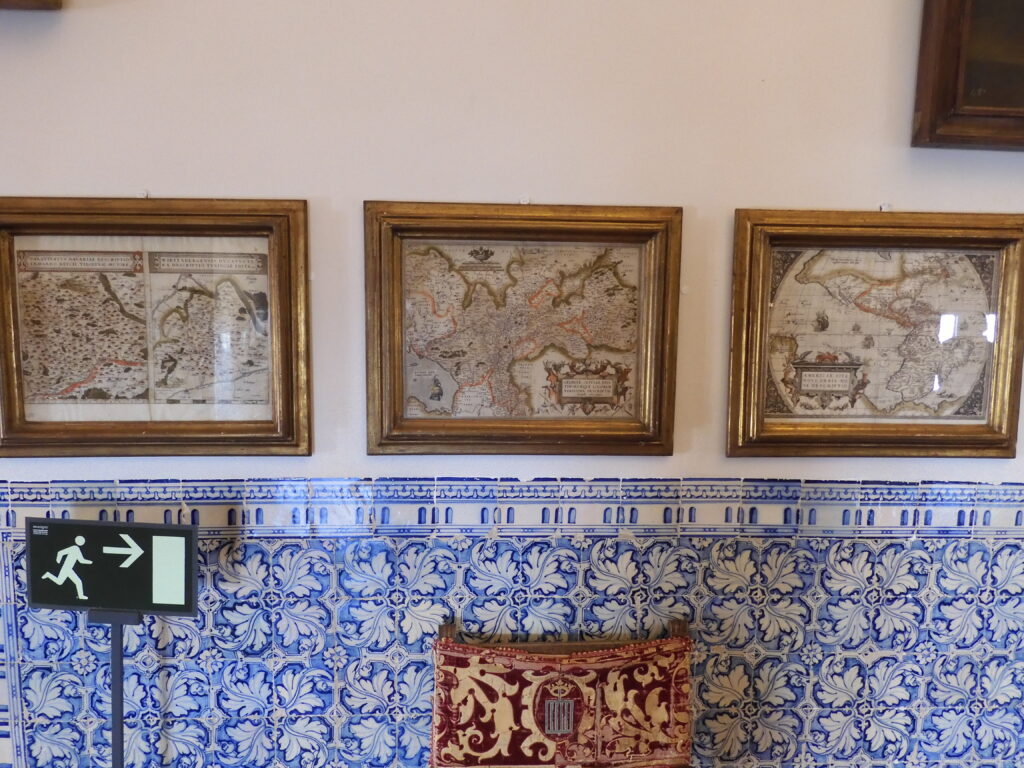
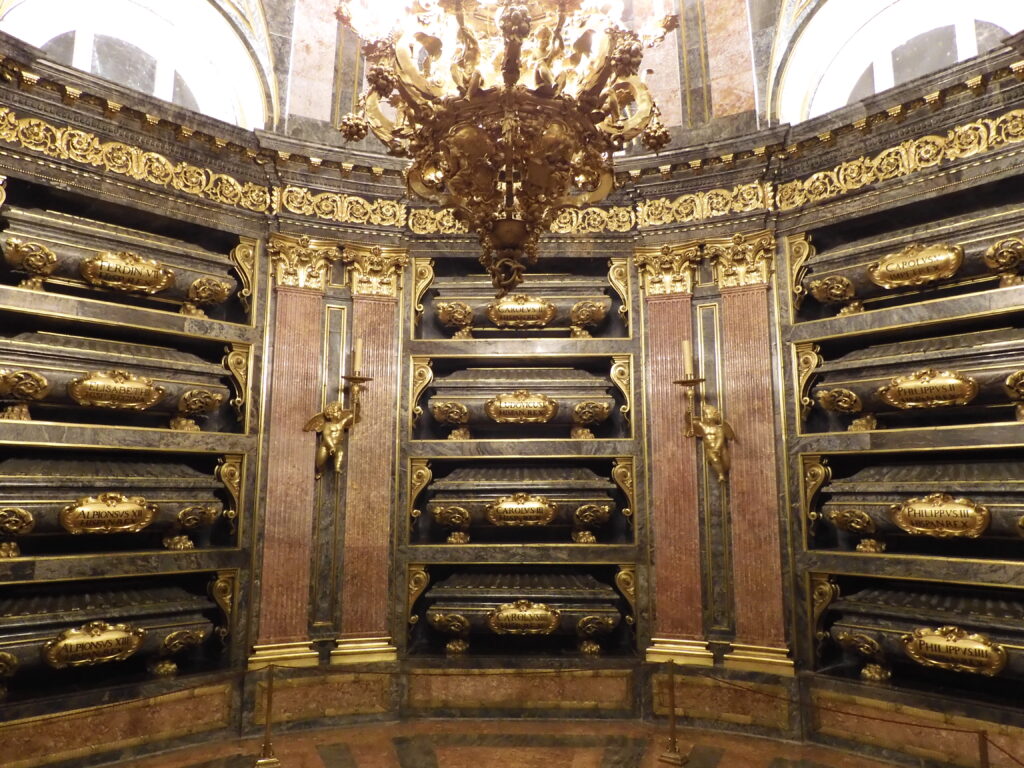
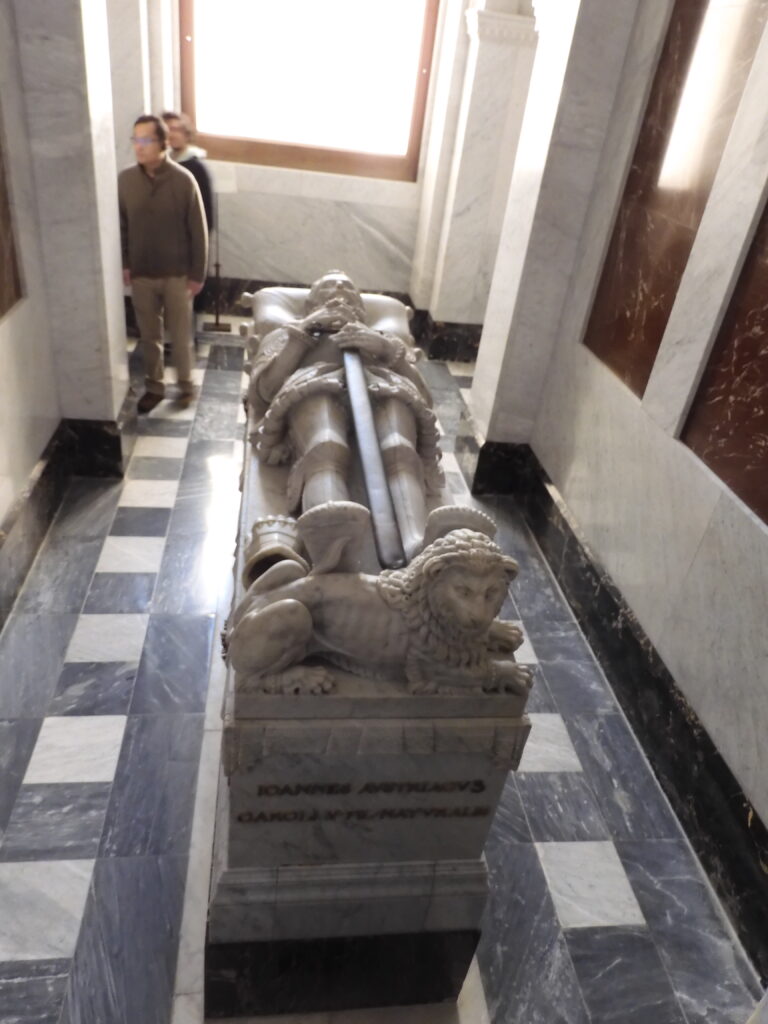


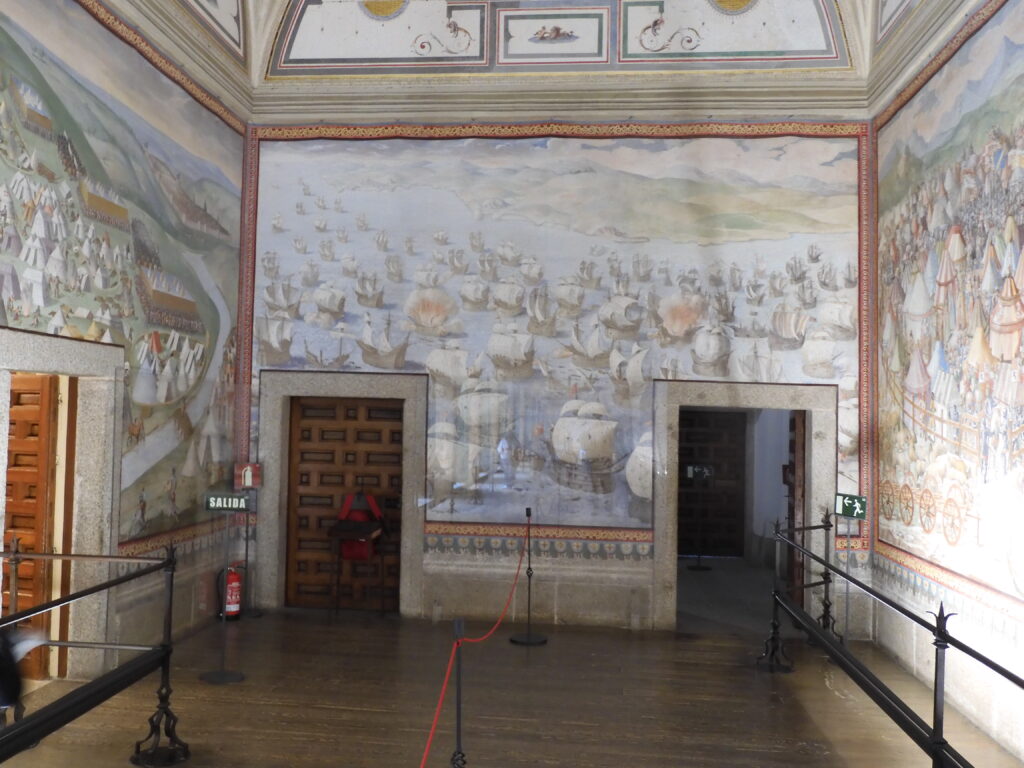


The less elaborate theme of the building does not mean El Escorial lacks art. On the contrary, its cloister is home to many fine works by Velazquez, El Greco, and others. The staff at the monastery has gone to great lengths to preserve the frescoes that decorate the halls and larger rooms of the buildings. Some of these frescoes cover walls of entire hallways and depict important Spanish battles. The detail is intriguing, and shows all aspects of these sweeping campaigns. Examples of those large frescoes can be seen in the pictures here. It was also interesting to see graffiti left by French troops during Napoleon’s invasion of Spain in the early 19th century.
As time went on, some changes to El Escorial were made by subsequent rulers, but the general theme was not disturbed. The Bourbon kings built their own quarters. The interior of the Bourbon royal apartments are decorated in a different style, but the architecture and older pieces of art were not disturbed. The Bourbon quarters are mostly decorated with tapestries depicting hunting scenes or replicating well known paintings.
I often consult bloggers and youtube video creators to get ideas on what to see when I go to a new place. Of course, most of these folks recommend visiting El Escorial and the Bourbon royal palace in Madrid. None of them mentioned a Naval Museum. My tour guide mentioned the authentic sword of John of Austria was on display at the Naval Museum. Once I learned there was such a thing, I knew it was a place I wanted to visit. The El Escorial tour was not particularly long, and I was back in Madrid by mid-afternoon, so I decided to give it a try.
(Continued)
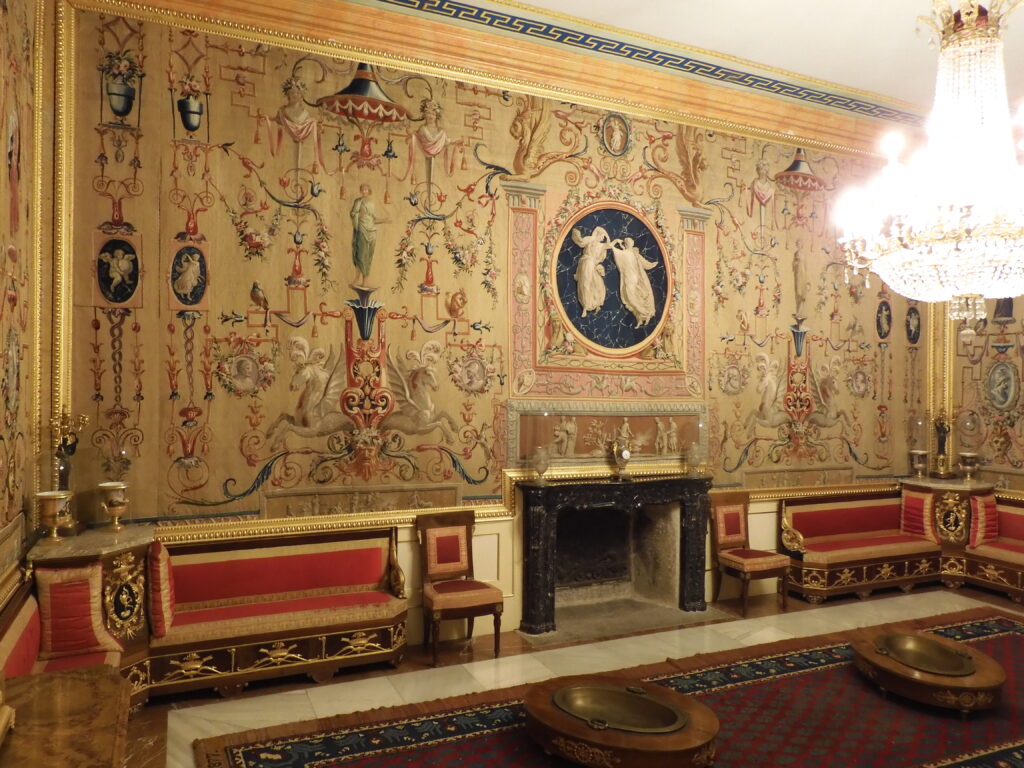
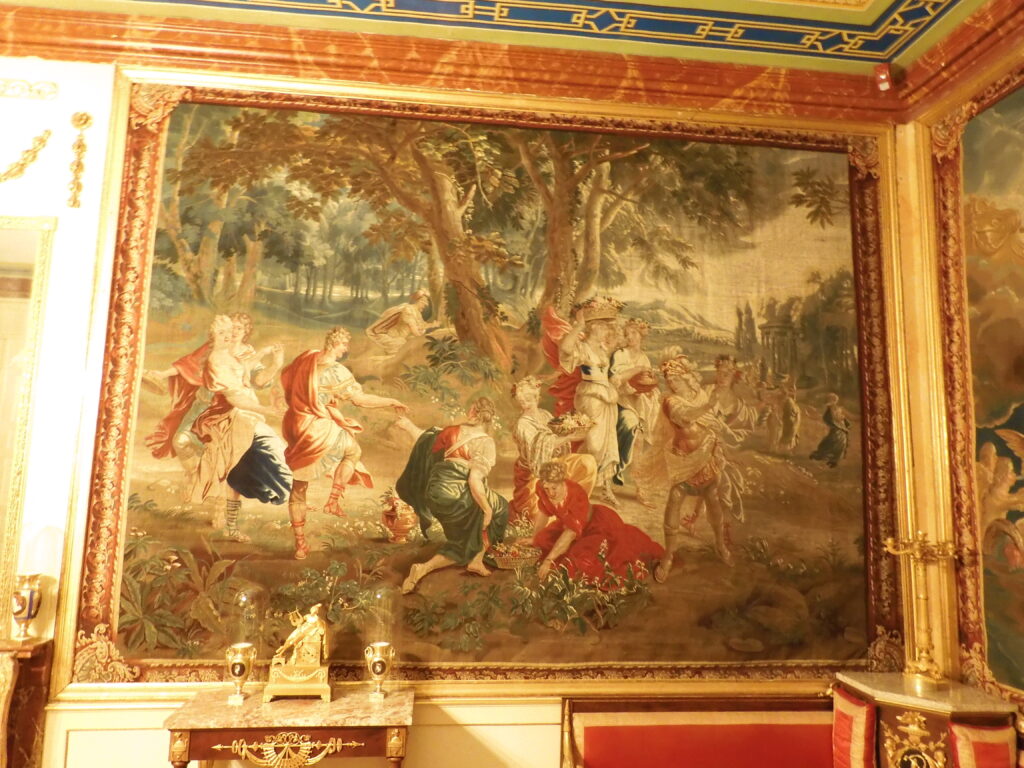
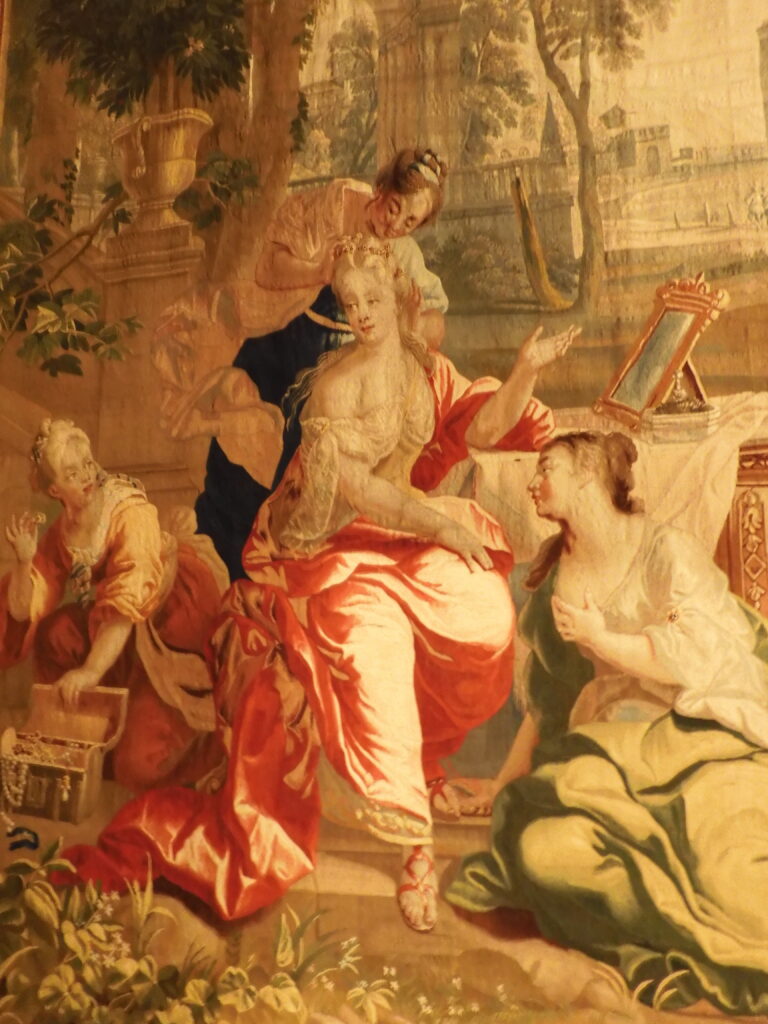
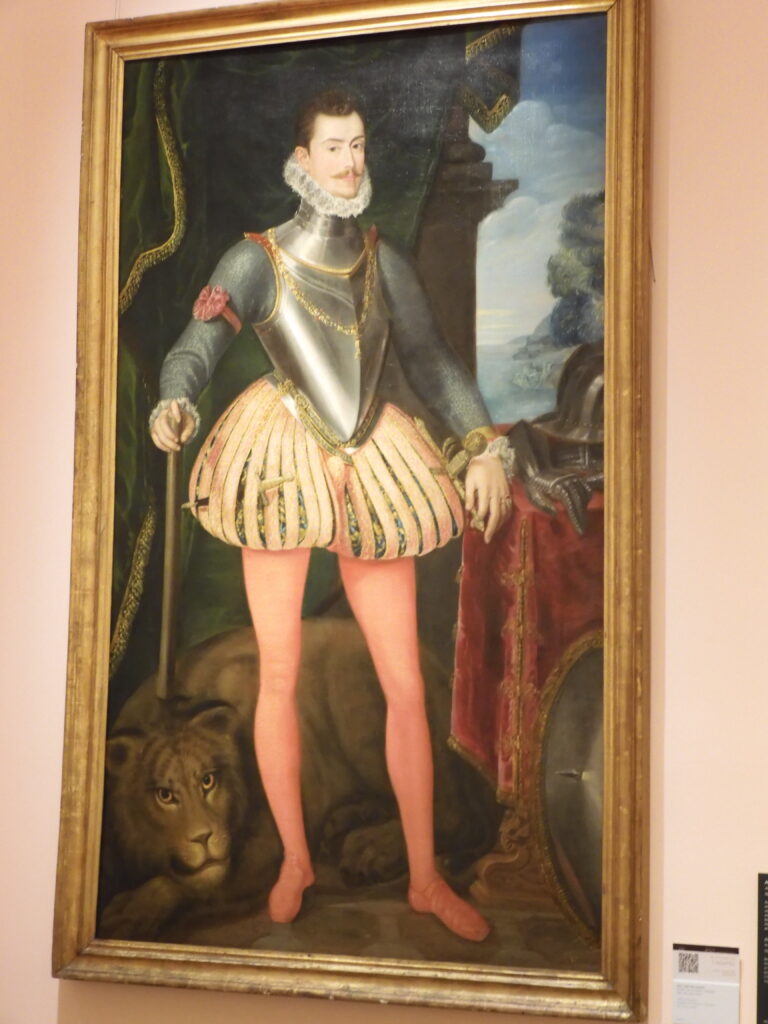
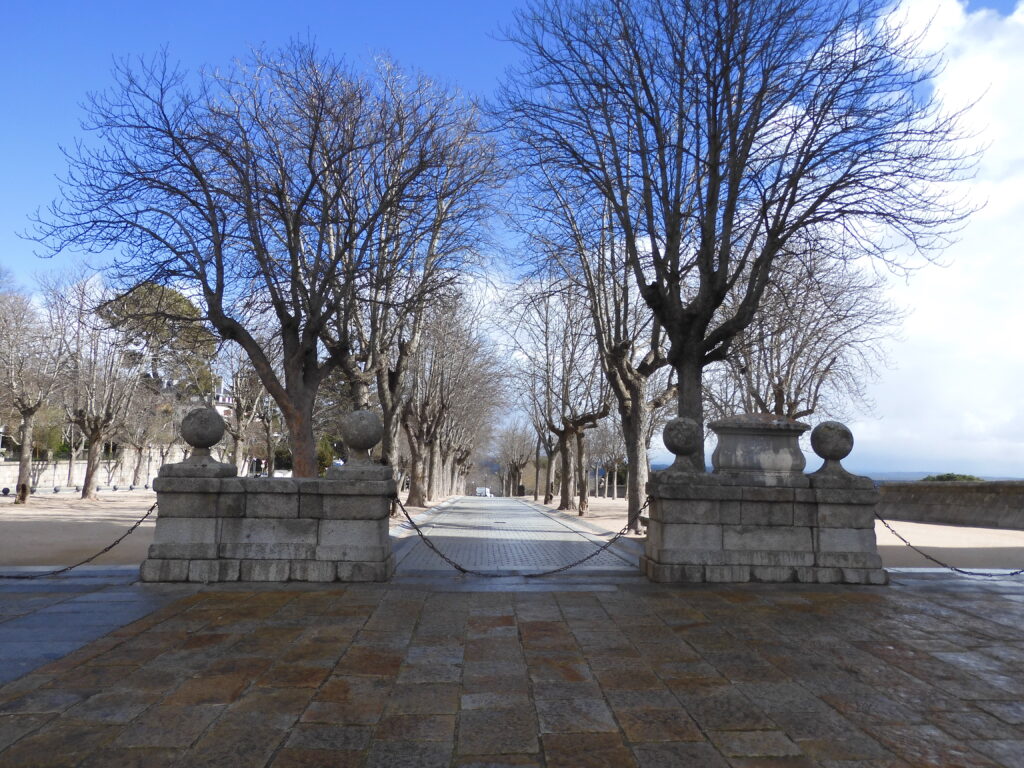
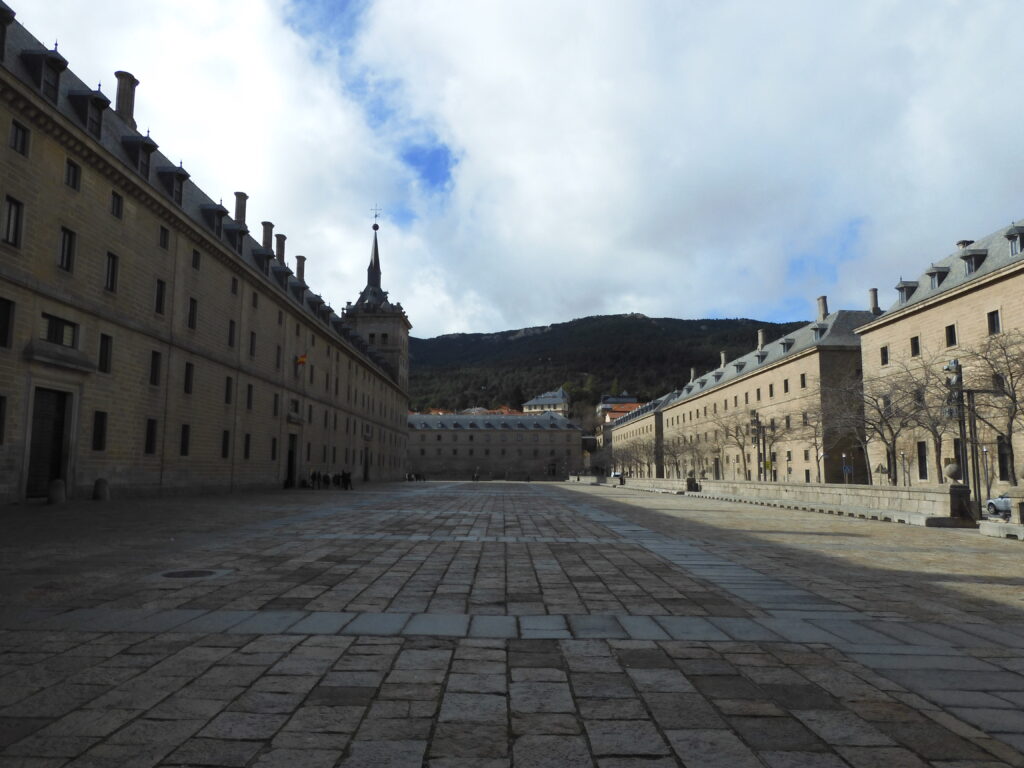

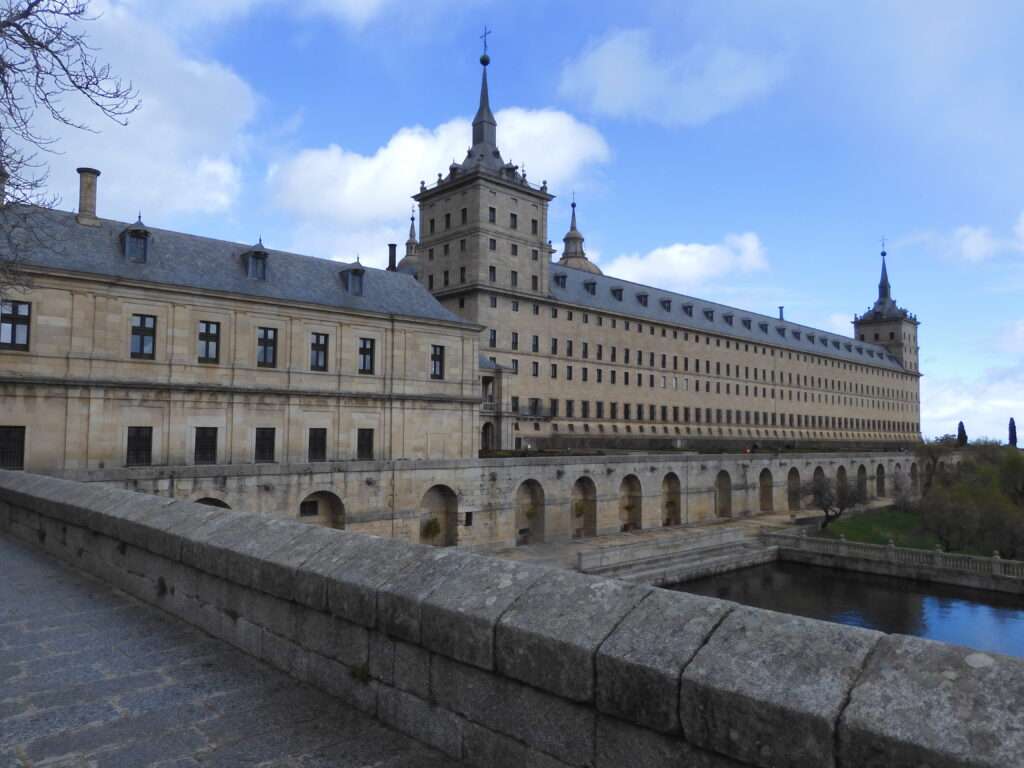
The only thing keeping the Museo Naval from being absolutely superior is that for obvious reasons, they do not have any actual ships. There were a lot of other amazing relics, models, and artifacts from Spain’s long naval history. There were models of Columbus’s ships, guns from different Spanish naval periods, early navigation instruments, and even some examples of ships and armaments from the modern Spanish Navy. Many of the models were very large and detailed, but of course the actual historical guns and instruments were even more intriguing. They, too, had some nice examples of early maps.
Of course, they also had on display the authentic sword of John of Austria. John of Austria was the illegitimate son of Holy Roman Emperor Charles V, and thus half brother of Phillip II. Charles V had been a widower for seventeen years by the time he fathered John, who was born in the Bavarian city of Regensburg. He was provided for in Charles V’s will. Around the time of Charles’ death, John was moved to Valladolid, Spain. As a recognized illegitimate Habsburg child, Phillip decided he should be accorded honors above many other members of the Spanish nobility, but was not allowed to be called “highness,” a term reserved for princes and royalty. He was educated with Phillip’s sons and eventually became an effective military commander for Phillip II, whose domains included the Netherlands and some of the Italian kingdoms, among other places.
Though his brother initially put John’s talent to use directing land forces to subdue a Moorish rebellion in Granada, he seemed to have a persistent interest in naval combat. He appealed to Phillip for permission to join Catholic fleets setting off on other adventures earlier in his adulthood, but was turned down. Later, the pope asked Phillip II to send a fleet to help combat an Ottoman force that was attacking Cyprus. Phillip agreed, but only on the condition that John be placed in command. Thus, John of Austria led a united fleet of Genoan, Venetian, and Spanish galleys sent by the pope to help rescue Cyprus from a Turkish naval invasion. The result was a smashing Holy League victory at the Battle of Lepanto. Lepanto was significant for being the last major naval battle to be fought almost entirely by galleys. Galleys are ships primarily propelled by oarsmen rather than sails.
The Ottoman fleet suffered the loss of most of its vessels. Thousands of Christian galley slaves were freed. Perceived Ottoman domination of the Mediterranean was shattered. The Turks eventually occupied Cyprus, however, leading some historians to downplay the significance of the battle. One Ottoman leader brashly huffed a couple of decades later that although the Turkish fleet had been destroyed, eventually Cyprus was captured. Losing the fleet, he claimed, was like having your beard cut off. It would grow back even stronger. Losing Cyprus was like losing an arm. It was gone forever. Even if it is a bit out of vogue to celebrate Lepanto as a great Christian victory against the military spread of the Ottoman caliphate, it is easy to see by looking at the rise and fall of that empire that it coincided with a subsequent military and economic decline that continued until the collapse of that empire at the close of the First World War. That does not seem coincidental.
John of Austria was an illustrious military leader on land and sea. He was an eccentric character famous for purportedly having a pet lion. He was certainly a heroic and interesting character, famous and privileged for sure, but barred from the highest levels of prestige and authority for being an illegitimate rather than a full fledged, official family member of the Habsburg emperors. He had mixed results quelling Dutch Protestant revolts against Spanish rule. He won some early victories in the Dutch provinces, and suffered a significant defeat. Several months later, he contracted a fever and died at the age of just thirty-one.
After an entertaining and interesting visit to the Naval Museum, I navigated my way back to Barrio de las Letras via the easy to use Madrid metro system. I perused the local options for something to eat. I had been told that paella was one of the standard traditional Spanish dishes to try in this region. Apparently, though, it is almost exclusively served at lunch. I resorted to other alternatives, which you can see on my page dedicated to food. My Friday evening once again came to an early close as I headed back to the room to organize my photos and share a brief note on my experiences with my Facebook friends.
